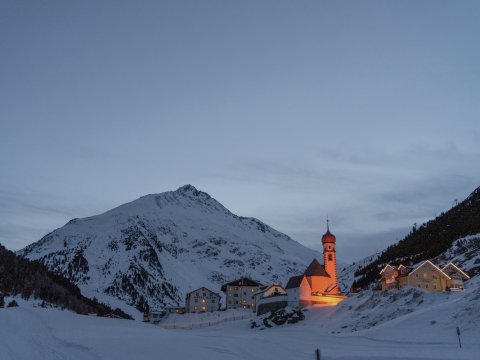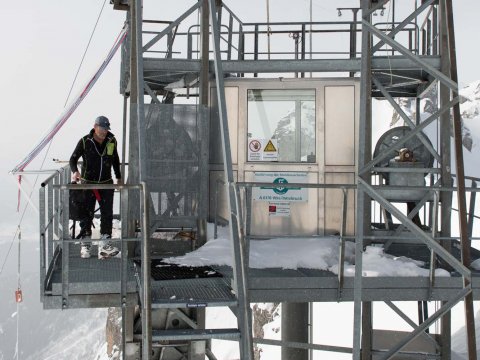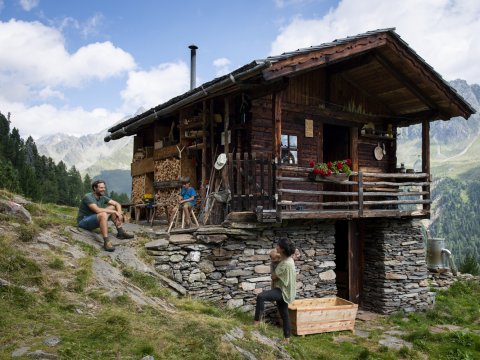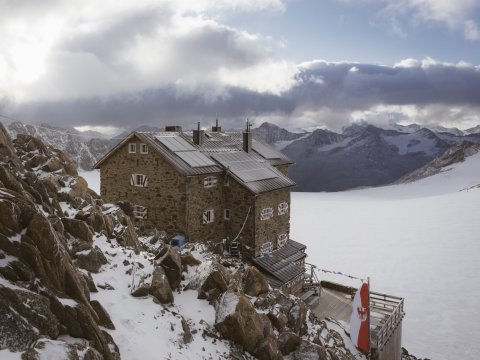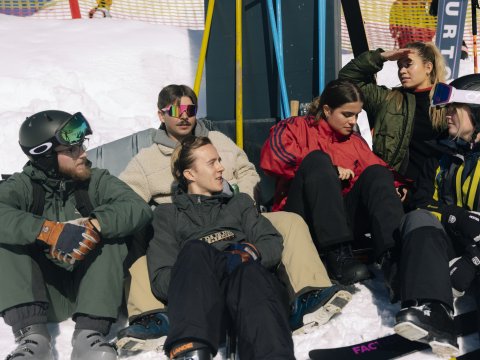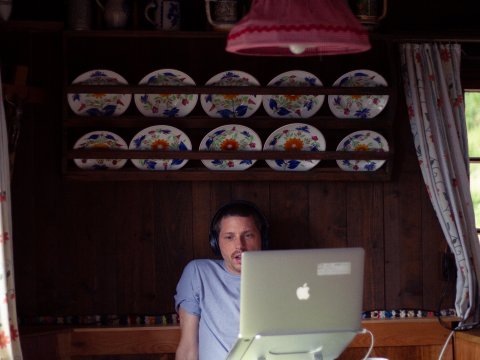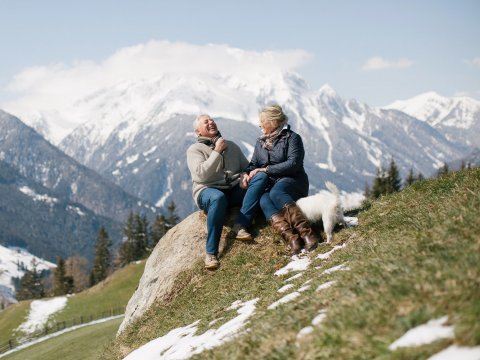Childhood Memories from Tirol
Photos: Ramon Haindl
What do beetles taste like? Can I hike to the top of that mountain? What happens if I touch an electric fence? We spoke to five people from Tirol to find out which childhood experiences they still remember to this day.
Hans "Bantl" Neuner | Hiking guide from Leutasch
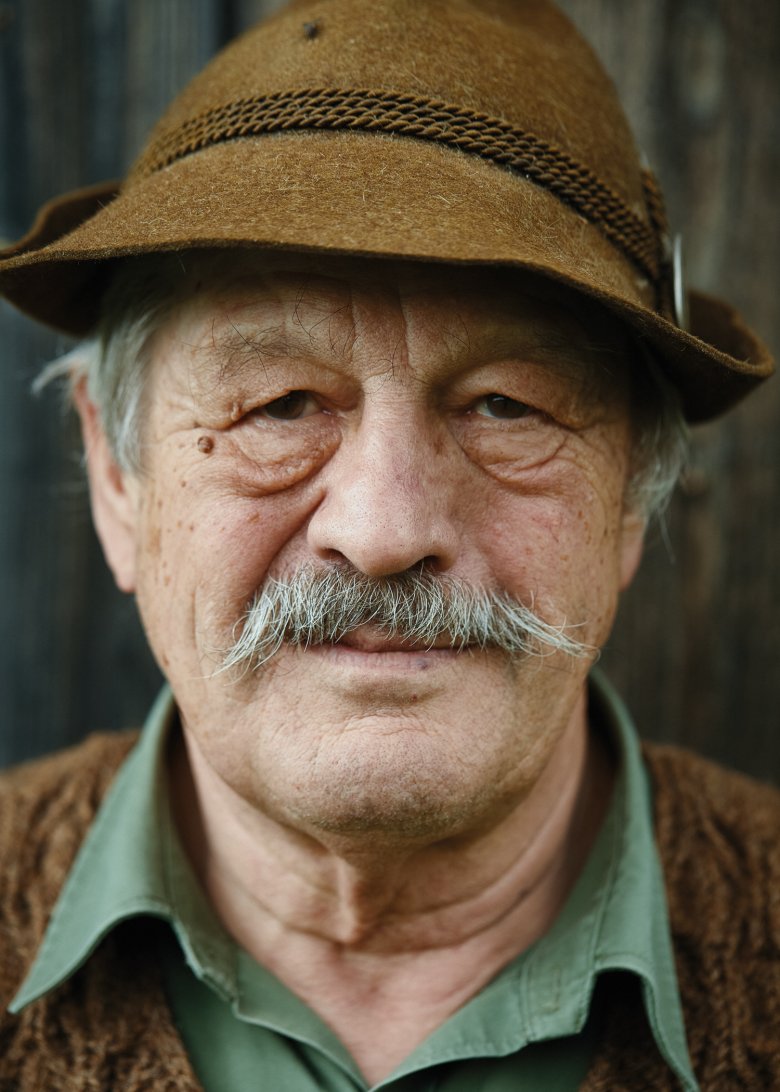
Growing up in rural Tirol, me and my friends would always come up with new ways to test our skills against each other and attract the attention of the girls. Many such activities revolved around a large weeping willow. We would use its branches to make bows and arrows to see who could shoot the best. We would turn it into a musical instrument by hitting the branches until all that was left was the bark. These hollow branches were then tied together with string to make what we called a "May Flute". We would then try to enchant the girls in the village by playing music on this improvised instrument. Each year at the forest festivals we got the chance to dance with the girls we liked the most – if we were brave enough to ask them. There was a local brass band playing music and we boys performed a traditional "Schuhplatteln" dance on stage full of athletic jumps and vigorous thigh-slapping. After the first performance we would always choose one person from the audience to come up on stage and dance with us. Everyone else watching would scream and laugh as they looked on. In spring we visited the small lakes which formed in the valley as the snow melted. They were about 2-3 metres deep. None of us could swim, but we were keen to sail on these bitterly cold waters. We would make rafts from old barn doors and pig troughs. We never got far in these makeshift boats – it was all about seeing who would be the last person to jump off before it sank. I remember once how one of my friends, holding a piece of wood in his hand as a paddle, shouted over to me with a smile: "Careful you don't drown, Hansi." I laughed back. We had no fear on our boat adventure in the mountains."
Monika Neuner | Herb expert from Leutasch
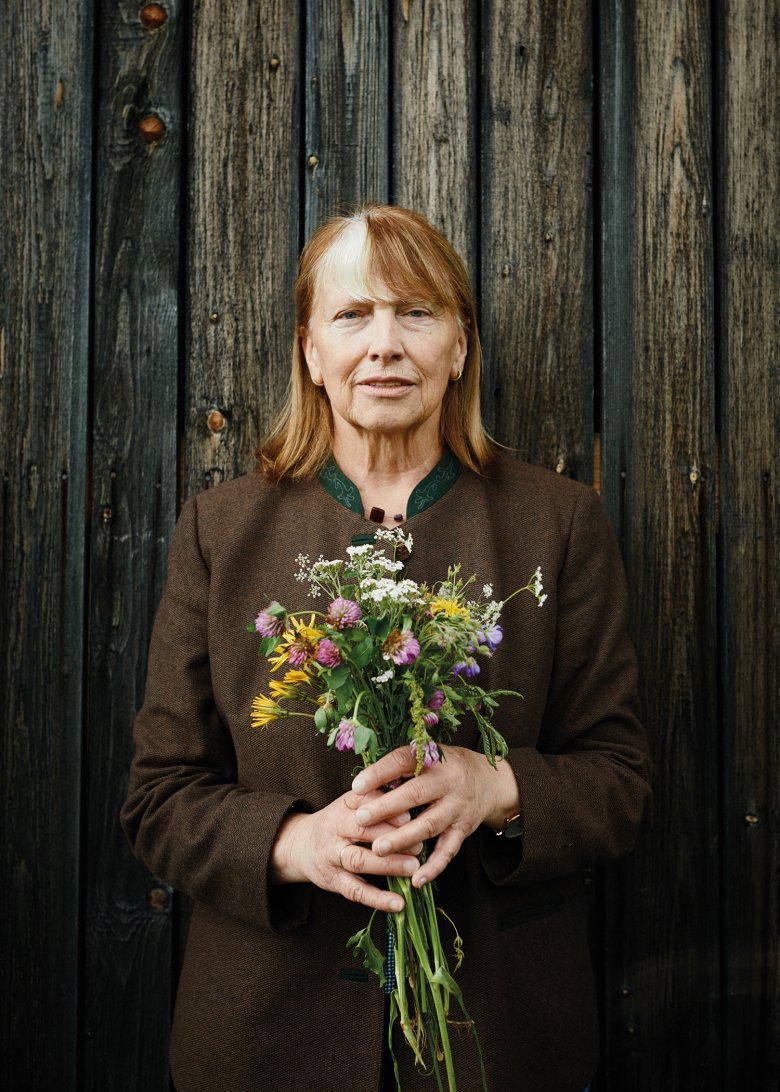
When I was a child we would make our own Sauerkraut each autumn from cabbage. It was the only vegetables we had to eat during winter. The snow would cover the meadows and pastures around our village for months on end. By the time spring finally arrived we were desperate to see the lush greenery once again. You can imagine how excited we were when the first flowers blossomed on the meadows. We would run home from school and straight out onto the fields to eat handfuls of the long grass. We must have looked like little human sheep! But we knew what we were eating. There were plenty of edible plants we recognised, from meadow goat's-beard to common sorrel. Still, it must have been a strange sight – especially for the tourists. They would give us money so we could go and buy ourselves a bite to eat at the local shop! We always found that funny. From then on we knew where we could graze for free – and even earn a little money on top. As summer arrived we were always impressed by the huge beetles in the fields. Sometimes they would fly straight at us as if they were blind. We would catch a few. One day someone said: "Who is brave enough to eat one?" We were all pretty scared, but nobody wanted to admit that in front of the others – so we did it. You had to bite the head off the beetle, spit it out quickly and the suck on the body. They had a strangely sweet taste – a bit like a boiled sweet – because they mainly ate the leaves on fruit trees.
Alois Berger | Retiree from Prägraten
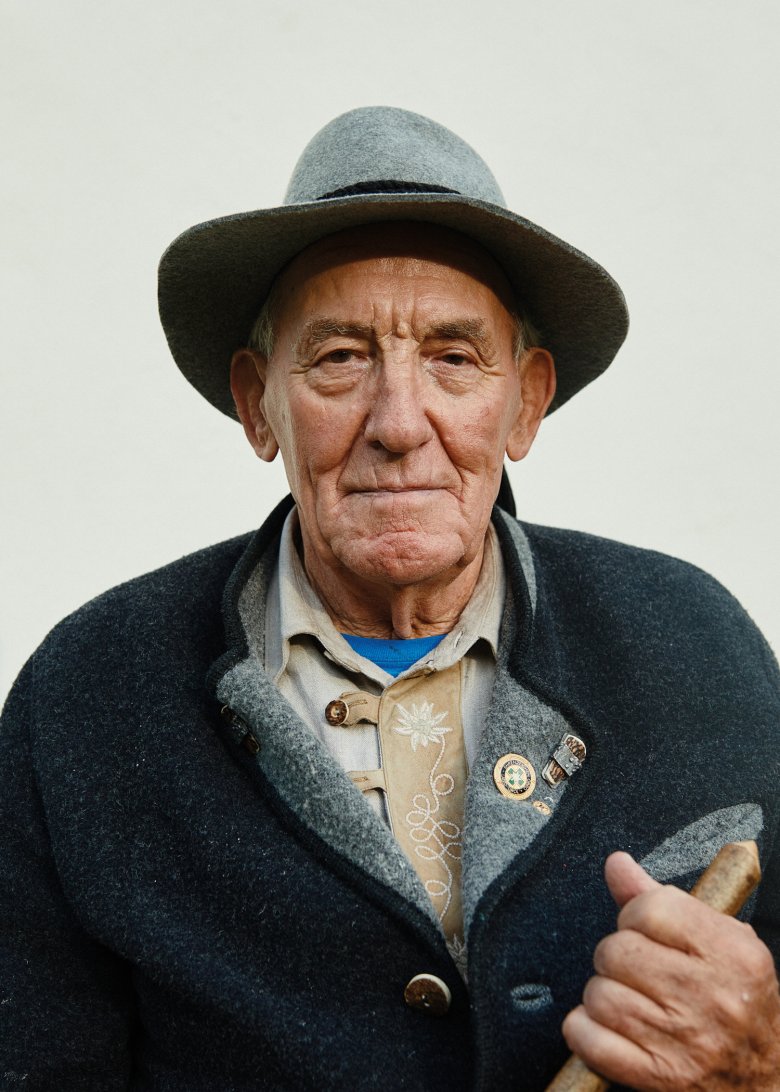
As a child I spent a lot of time with my father in the mountains looking for gemstones. My school needed them for lessons – their original collection had been destroyed in the war. We also sold the gemstones to guests and to mineral museums around the world. For us it was a fun treasure hunt and an important additional source of income for my family. We would go out very early in the morning and not return until late at night. Our journeys took us into tiny caves, where we would abseil down and eat the packed lunch my mother had made for us both. If we made a good find then we wouldn't stop for a break at all – after all, we weren't the only ones out in the mountains looking for precious minerals. When I was six years old I heard for the first time of the stories in our local village about the witches and evil spirits that lived in the mountains. We lived at the foot of the Großvenediger, one of Austria's highest mountains. I thought that if I could climb to the top one day I would be able to see the whole world from the summit. One day early in the morning I decided to do it. My parents were already out working in the fields. "Today's the day," I said to myself. I set off without any food and wearing just a pair of shorts to climb the 3,657-metre-high peak I had been gazing up at every day for years. As I reached the Defreggerhaus, the last mountain hut before the ascent to the summit begins in earnest, I met a group of mountain guides. They were more than a little surprised to see me. "I want to climb the Großveediger to see the world," I told them. Amused – and also impressed – they decided to let me join their expedition. They were kind enough to give me a woolly hat and a pair of gloves before we set off. I was over the moon. It was a sunny day in August, but up near the top the temperature was around -20°C. I could feel the bitterly cold air on my face. My hair began to freeze. But when we got to the summit I managed to forget the cold for a few moments. I had imagined the world would be much bigger. But I had loved every single minute of our adventure. It was then that I decided that I wanted to be a mountain guide. Over the years and decades that followed I climbed the Großvenediger 4,000 times – but never again was it as cold as it was on that first ascent.
Maria Gapp | Farmer from Reith bei Seefeld
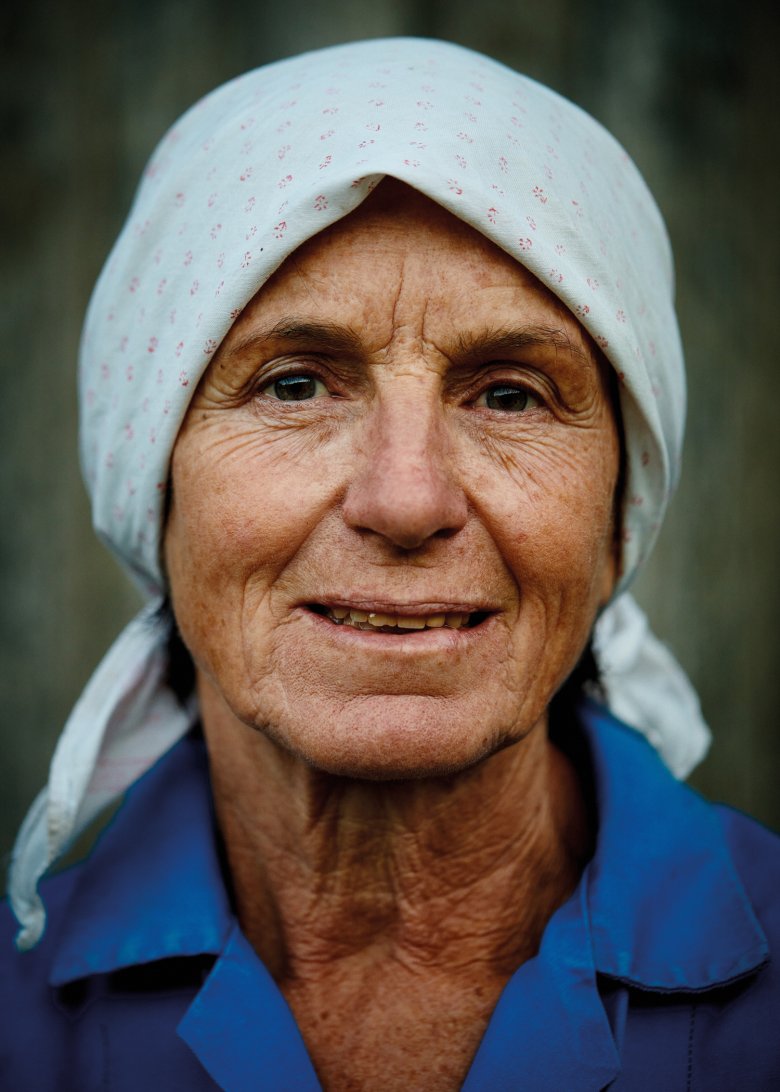
As children we worked a lot on the farm – otherwise my father would have had to do it all on his own. My favourite job was scything the grasss on the meadows early in the morning before school. I would get up at the crack of dawn, wait for the sun to rise and then get to work. As autumn arrived we would spend more time in the forest. My father cut down trees at almost 2,000 metres above sea level. Back then there were no trails and paths in the forest like there are now. We had to build our own trail to transport the wood down into the valley. We would then be given tree trunks about two metres in length. Our job was to get them down to the bottom as quickly as possible. For us kids it was a competition – who could toss the tree trunk the furthest? All in all we had to make it about five kilometres from top to bottom. We tried to overtake each other and screamed with joy if we did so. Some sections were pretty steep. In autumn, when the ground was already frozen, it was easier for the wood to slide – with us on it. I loved that time of year. The tree trunks would eventually be chopped us and used as firewood to keep us warm in winter.
Hubert Kirchmair | Waggoner from Schwaz
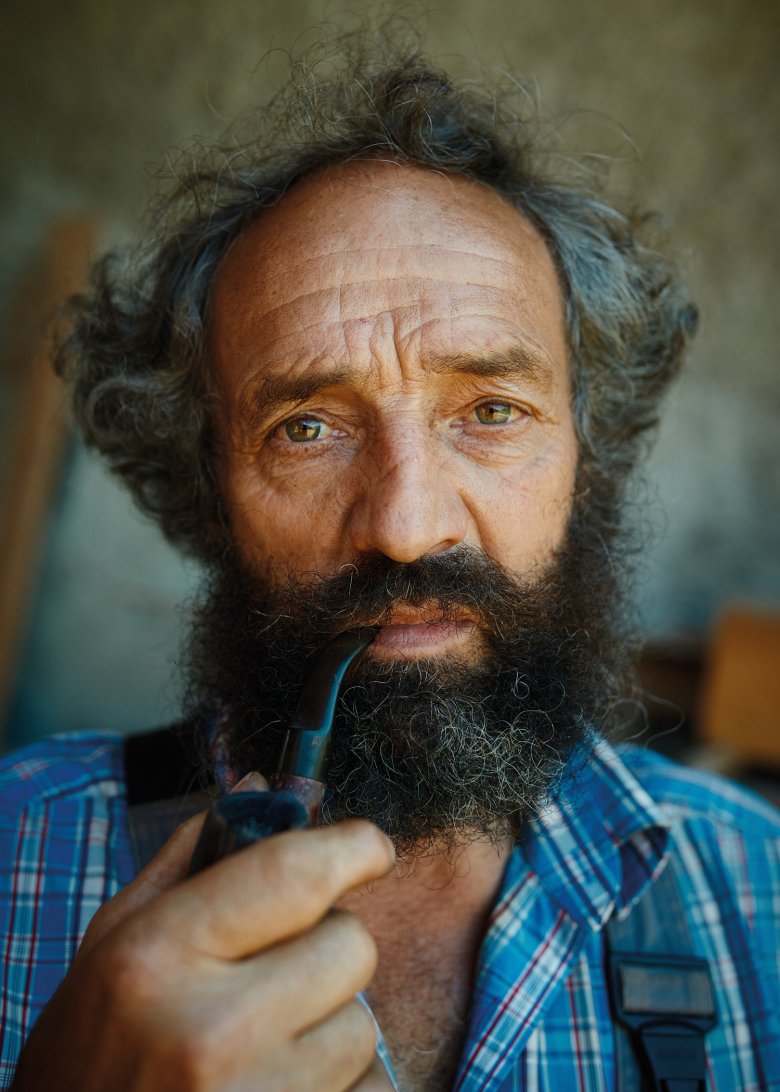
At 2,000 metres above sea level we had a pasture for our cows to graze. In summer they would spend almost two weeks at a time up there. Of course they needed to be milked and looked after, so my great-uncle and I would go up into the mountains to do that. I must have been around five years old at the time. Every day we would get up at four o'clock in the morning to walk up to the high pastures. We would get there at about six o'clock and start milking them straight away. My job was to make sure the cows stayed calm and didn't wander off. I quickly learned that each cow has its own personality. Some are cheeky and rebellious, while others are docile and easy to handle. I was six years old when we installed the first electric fence around the pasture. It must have been in the 1970s. Until then we humans had kept an eye on things and made sure the cows stayed on the pasture. My brothers and sisters and I helped my father and great-uncle roll out the wire fencing. When everything was in place, it was finally time to flick the switch. Everyone was looking at my father. He moved his hand towards the electric fence, grabbed hold of it – and showed no reaction. He looked over to my great-uncle. Nothing. I was amazed by what I had seen and quickly grabbed the fence myself. A bolt of electrictiy shot through my body – and my father and great uncle started to laugh.










